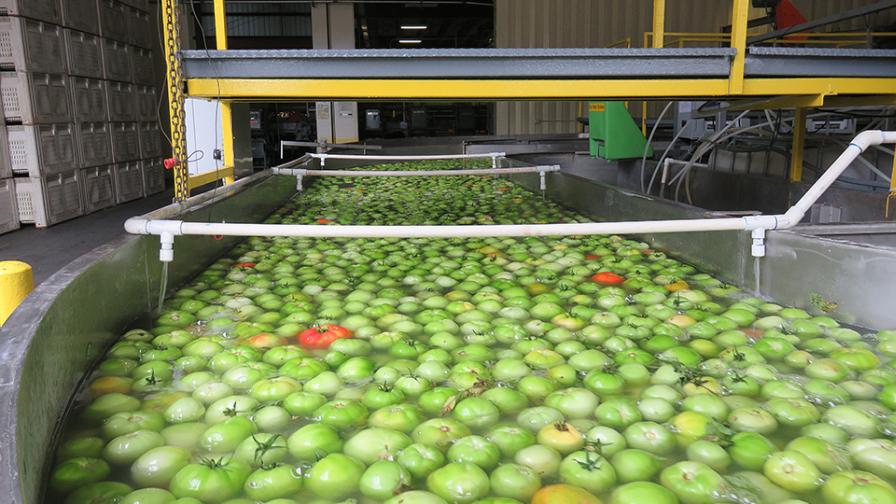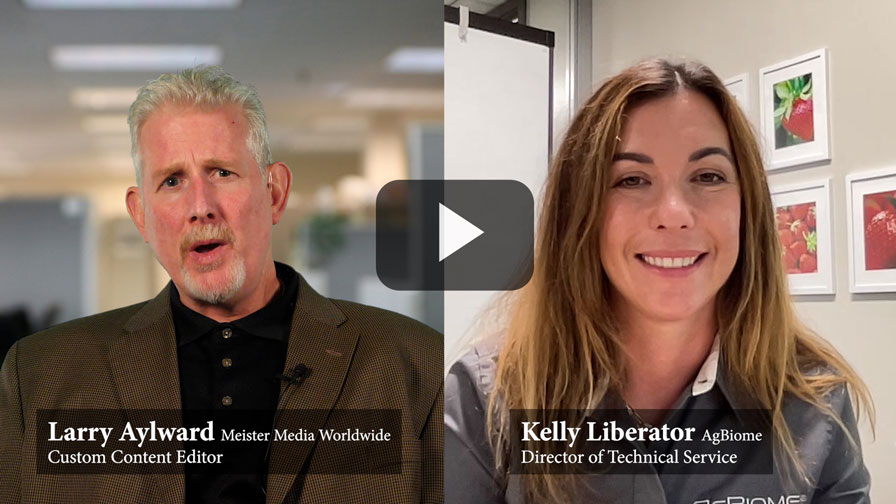Postharvest Predicament: The Dog Days of Summer Renew Interest in Water Reuse

Years of drought, increased pressure to reduce postharvest spoilage loss in distribution, greater focus on water quality for food safety in packing and processing, including more frequent freshwater exchanges — and local or regional water use efficiency requirements — have stimulated a renewed look at reconditioning and water reuse technologies.
Photo by Trevor Suslow
Fresh water scarcity and water quality are part of a large body of issues being addressed in the complex global water crisis. The tentacles connected to this immediate issue in many areas of the world are numerous and include land degradation, groundwater depletion, land subsidence impacting water conveyance infrastructure (with public health and food safety implications), and serious societal policy and governance challenges.
In the search for equitable policies and optimal technology-based solutions, one area often overlooked is the increasing pressure to implement postharvest water use efficiencies and water reconditioning/reuse mandates for produce packers and processors. Fruit and vegetable primary packing and value-added processing can be exceptionally large consumers of fresh water and generate large volumes of wastewater of varying effluent quality, some with undesirable environmental discharge concerns.
In the U.S., the severe drought conditions and battles over the documented or perceived imbalance between groundwater extraction and natural or managed aquifer recharge has brought a new cycle of interest in process water reuse to meet sustainability goals. Across the extended years of drought in the West, challenges persist in many rural areas between groundwater extraction for domestic and municipal needs and local packing operations, which are often the major consumers of fresh water sources. As key members of the rural community, responsible companies are sharing renewed and proactive efforts to identify cost-appropriate water efficiency and reuse systems.
AVAILABLE SYSTEMS
There are a number of advanced water reconditioning systems in place in many food industries, and technology adoption has been occurring in the largest packers and processors for many years. The focus here is limited to touching on some of the most currently researched and piloted systems for water reuse in packing operations.
An important point for those considering or facing mandated water reuse goals, a build-out, or upgrade of water efficiency and reuse in packing operations, is that sequential treatment within integrated systems stands out as the preferred approach. Removal of the suspended materials and, though more challenging economically, dissolved organic materials and inorganic constituents that interfere with water treatments for food safety are the targets for
system design. The basic steps include:
Coarse Filtration — The size exclusion selection depends largely on the nature of the incoming product and non-product organic and inorganic solids.
Fine Filtration — Again, dependent on the system design goals for particulate removal, filtration exclusion tends to be 50 to 100 microns. More recently, exploratory interests in filtration exclusion of foodborne parasite spores with remarkably high tolerance to typical water treatment antimicrobials (i.e., Cyclospora cayetanensis oocysts are typically 8 to 10 microns in diameter; that is 0.0004 inches) have been initiated in specific regions of concern.
Flocculation and Sedimentation — Fine filtration is often too expensive and, potentially, the return cycle rate limiting in water throughput so flocculation treatments or an off-facility sedimentation basin are used to reduce suspended particulates.
R/O or Activated Charcoal — A reverse osmosis system for calcium and magnesium removal (reduction of water hardness which may limit antimicrobial treatment performance) and adsorption of disinfection reaction by-products is generally a step bypassed in postharvest water treatment due to cost. Various activated charcoal filtration units are a common alternative, typically using granular or pelletized forms in large canister units.
Advanced Oxidative Treatment — There are numerous return loop treatments to prepare packing and process wastewater for reuse. However, the two most focused on currently seem to be electrolyzed oxidizing water (EOW) and ozone (O3).
Re-treatment with Residual Anti-microbial — As EOW and O3 have very low residual activity in dump tank and flume circulation, the addition of an approved antimicrobial is needed during use.
One vital guiding approach for firms considering water reuse investment zeroes in on the baseline concept that you are not expected to generate drinking water, and you likely do not have to hit all benchmarks at once. Even 80% water reuse can be very costly and not meet your total water volume use needs, which should always be calculated to include cleaning and sanitation. Several firms I have interacted with over the past three years use a Loop Blend approach of mixing reconditioned water with primary source water to achieve incremental and measured performance against audited sustainability goals. Realistic expectations allow the good to be the roadmap to the optimized.










